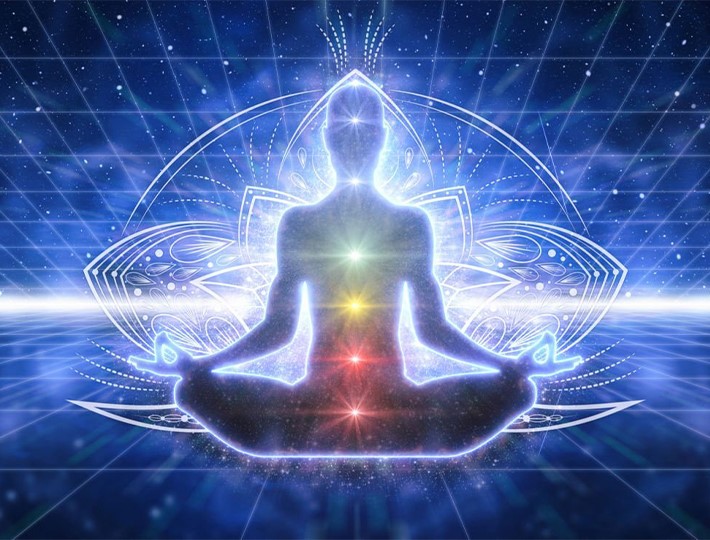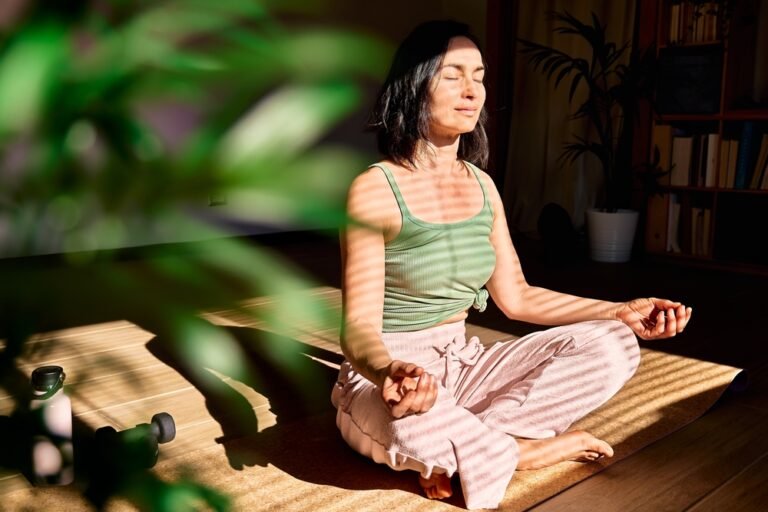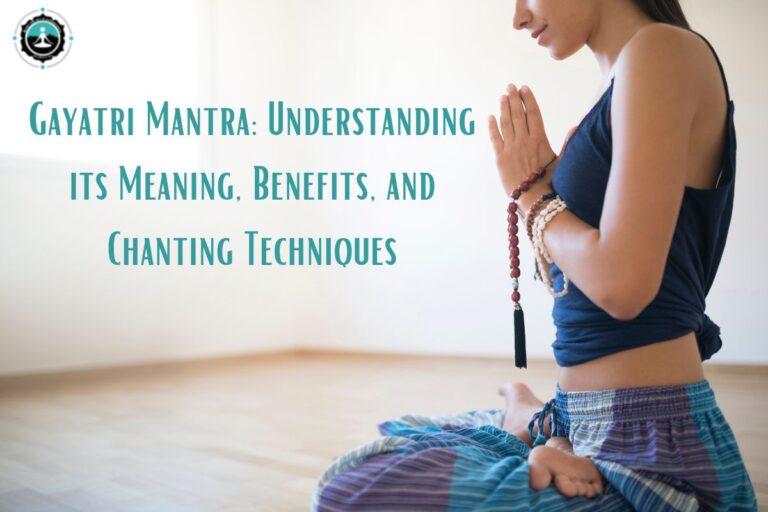Yoga Your Way to Wellness: A Chakra Alignment Routine
Do you know how it feels to have this nagging discomfort or a feeling that something is just not quite right? Sometimes this can mean that there is a misalignment of the chakras. According to the old Indian tradition, chakras are considered to be whorls of energy that exist in your body and affect health and spirituality. What if I told you that they are like spinning discs of light that, when synchronised to rest in the middle, are in perfect equilibrium and bring a correct flow of energy to your system?
So, what if we told you that there is a softer, more powerful method that can help balance these energy points in your body? Gentle yoga is a form of exercise in which specific movements, deep breathing, and relaxation techniques are used to enhance one’s health. It is such a great tool to use when you want to engage your chakras to produce a feeling of serenity.
It is written for those who are just starting their yoga journey, as well as for those who have practiced yoga for years and would like to add some depth to it, as well as for those who are just eager to become healthier and require the help of yoga. The asanas featured in the following 20-minute session will assist you in achieving your goal of alleviating stress, increasing energy, or increasing spirituality so that you can reach your ultimate capacity for wellness.
Understanding Chakras
Chakras can be defined as spinning wheels of energy that are situated along the vertebral column. It is alleged that these seven major nodes are connected to other systems that determine health in physical, psychological, and subjective aspects.
Therefore, when chakras are aligned, positive energy is processed, and the body and spirit are healthy and at peace. But when expressed as positive and balanced energy, it is a force for good in helping, healing, and growth; when it is negative, blocked, or not balanced, it results in physical illness, emotional disorder, or spiritual sickness.
The Seven Chakras
- Root Chakra (Muladhara): Positioned in the pelvic area, it has aspects with regard to stability, safety, and existence.
- Sacral Chakra (Svadhisthana): Located in the lower abdomen and therefore linked to the realm below the navel, it rules over creativity, sexual drive, and joy.
- Solar Plexus Chakra (Manipura): Located in the upper abdominal region of the body, it pertains to such issues as personal strength, digestion, and, therefore, the feeling of self-value.
- Heart Chakra (Anahata): Located in the middle of the chest, it represents love, goodwill, and compassion.
- Throat Chakra (Vishuddha): According to the Tarot, it is located in the throat and is associated with speech, voicing opinions, and the truth.
- Third Eye Chakra (Ajna): Located in between the eyebrows, it is linked to the ability to know and to see within.
- Crown Chakra (Sahasrara): Located on the top of the head, it symbolises the ability to link to a higher power, illumination, and harmony.
Chakras and well-being
Every chakra is associated with our physical and/or emotional state of being. When your chakras are balanced, one will not feel exhaustion, depression, or restlessness and will have inner harmony. However, imbalances can manifest in various ways:
- Physical symptoms: bowel problems, tiredness, pain in the back, headaches, or hormonal disturbances.
- Emotional challenges: anxiety, shyness, inability to come up with ideas, aggression, sadness, language dysfunction, or loneliness.
Signs of Chakra Imbalance
To begin the journey of proper chakra healing, it starts with acknowledging the presence of imbalances. Some common indicators include:
- Root chakra: fear, anxiety, financial-related issues, groundlessness.
- Sacral Chakra: Lack of creativity, low libido, inability to find pleasure in things they once enjoyed, problems in relationships.
- Solar Plexus Chakra: problems such as inferiority complex, gastrointestinal issues, lethargy, and feebleness to stand up for what one wants.
- Heart Chakra: Suffering from the inability to love, both oneself and others, as well as resentment and jealousy, problems with the heart.
- Throat Chakra: It has been found that people with autism often have problems with communication, with putting feelings into words, and with common physical problems involving the thyroid gland.
- Third Eye Chakra: No concentration, confusion, bad dreams, and headaches are the common symptoms of stress.
- Crown chakra: loneliness, no connection with anything higher, no goal in life, depressions.
With the knowledge of the chakras and using this as a guideline for identifying early signs of imbalance, one can start eradicating such problems and, hence, start a process towards total health.
Benefits of Gentle Yoga for Chakra Alignment
Thus, gentle yoga is a useful method to bring your chakra alignment into balance and start the healing process. Depending on certain positions and techniques of breathing, you can help the energy move freely through your seven chakras.
Stress reduction and relaxation
It is for this reason that gentle yoga is best known as a type of exercise that is associated with the reduction of stress levels. During the practice, the muscles loosen their hold, and the brain starts to clear its thoughts. This state decreases your stress level and therefore enables you to concentrate on your breath as well as your internal self, which facilitates chakra balancing.
Increased Energy Flow
Yoga postures are supposed to activate knots in the human body. Normally, the body tends to apply pressure to various parts; therefore, with this rub, you are able to freely pump fresh energy into your chakra alignment. Again, this may give rise to such positive effects as energetic, lively, and positive moods, as well as general positive affectivity.
Improved Focus and Mental Clarity
It also helps in the minimisation of distractions that are linked to anxiety and aggressive thoughts, making gentle yoga enhance mental focus. In the subsequent phases of learning, you’ll perceive that your focus and clear-cut decision-making skills have significantly improved. This is probably the main reason why people need to develop their mental focus as a way of resolving all chakra imbalances and bringing harmony to their spirits.
Holistic Well-being
Chakra alignment is a cornerstone of holistic health. By practicing gentle yoga, you’re not only addressing physical imbalances but also nurturing your emotional, mental, and spiritual well-being. A balanced chakra system can lead to improved relationships, increased self-confidence, and a deeper sense of purpose.
Gentle Yoga Sequence for Chakra Alignment
This sequence will help you perform a soft yoga practice; the poses are chosen to help bring all chakras into balance. Some additional advice when practicing yoga for back care is that it is essential to remember to listen to your body and to make modifications when necessary.
Warm-up (5 minutes)
- Cat-Cow Pose: Swing the vertebral column as a cat and a cow; this move warms the muscles and bones of the body and spine.
- Downward-Facing Dog: A mild reversal to stretch the lumbar curve and warm up the muscles for more pronounced extensiveness of the stretches.
- Child’s Pose: Yoga stretches to relax the back and shoulders.
Root Chakra (Muladhara)
- Mountain Pose (Tadasana): Bears afford security and offer support and stability.
- Tree Pose (Vrksasana): maintaining balance and exercising balance.
Sacral Chakra (Svadhisthana)
- Butterfly Pose (Baddha Konasana): loosening of the joints, particularly being helpful in opening up the hips and increasing flexibility.
- Cat-Cow Pose: Further retraction and withdrawal motions are made with the intention of massaging the sacral area.
Solar Plexus Chakra (Manipura)
- Warrior I (Virabhadrasana I): Developing muscle mass and self-assurance.
- Warrior II (Virabhadrasana II): Building up the abdominal wall muscles and muscular thigh.
Heart Chakra (Anahata)
- Camel Pose (Ustrasana): It enables the opening of the chest and the heart.
- Bridge Pose (Setu Bandhasana): This pose also helps strengthen the back muscles as well as the chest muscles.
Throat Chakra (Vishuddha)
- Lion’s Breath (Simhasana): exciting the throat and thyroid.
- Neck rolls: gentle circles around the neck to relieve muscle tightness.
Third Eye Chakra (Ajna)
- Child’s Pose: Correlate to relaxing the body and closing the eyes.
- Meditation: silence the chattering of the mind; similarly, rely on intuitive thinking.
Crown Chakra (Sahasrara)
- Corpse Pose (Savasana): realisation and consolidation.
Cooling down (5 minutes)
Stay a few minutes in the Savasana position and just lie down to give your muscles a chance to assimilate the action.
Tips for Effective Chakra Alignment
To maximise the benefits of your gentle yoga practice and enhance chakra alignment, consider incorporating these tips:
Regular Practice
Chakra balancing needs to be done as often as possible to maintain balance. It is suggested to include it in the schedule that you follow to ensure that the energy circulation in your body is smooth and you are healthy.
Mindful Breathing
Proper breathing is very important for the purpose of chakra balancing, and it needs to be conscious. As you flow through the poses, ensure that you are mindful of your breath because this regulates the energy.
Visualisation
Another way of working with chakras is by using visualisation, which is also effective for chakra balancing. During the exercise, try to picture that the energy is running in the form of a light through the chakras, removing any distortions and charging at the same time.
Yoga Props
Some of the accessories that may be useful are blankets, blocks, and a strap that enables you to change poses. They also consist of accessibility for those who might somehow be restricted in mobility.
By adding these tips to your practice, you will be able to connect even more with your chakras and achieve improved balance.
Conclusion
So start practicing gentle yoga now, and you will be making the right choice in order to embark on a journey of transformation towards your improved self. This means bringing your chakras into alignment, which is one of the most effective means of rebalancing, as well as a natural stress reliever and a way to improve one’s functioning in general. So, even ten-minute practice sessions will allow for the achievement of great progress; just maintain the regularity.
Thus, always remember that while delving into the realm of chakra balancing, it is always wise to trust your gut and listen to your body. Yoga is very beneficial to the body, soul, and spirit. This practice has been around for centuries, so it is important that you allow yourself to benefit. But if you are willing to work hard and wait for the time that your break will come, then it is possible to develop yourself to the full and make your life a happy one that is free from conflict.
Also Read : Yoga Teacher Training in Bali , Yoga teacher training Bali Ubud , 200 Hour Yoga Teacher Training in Bali






